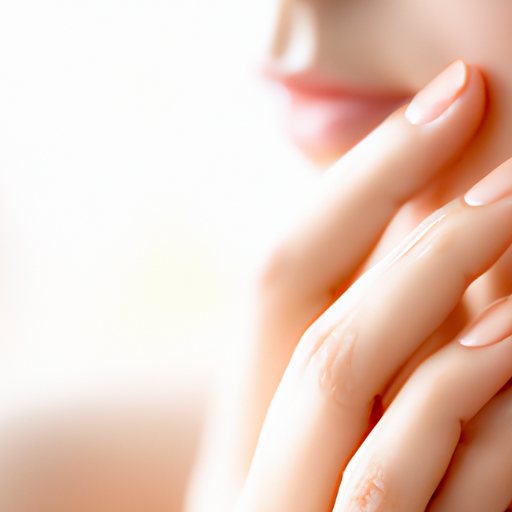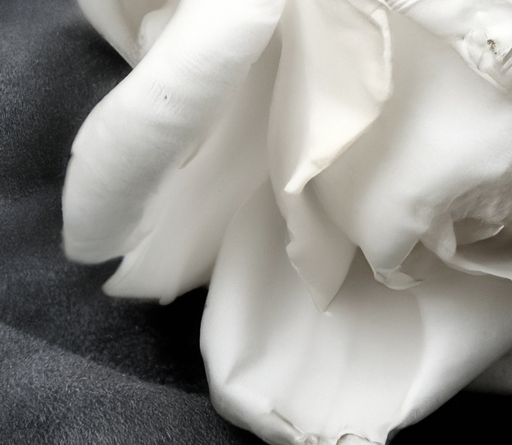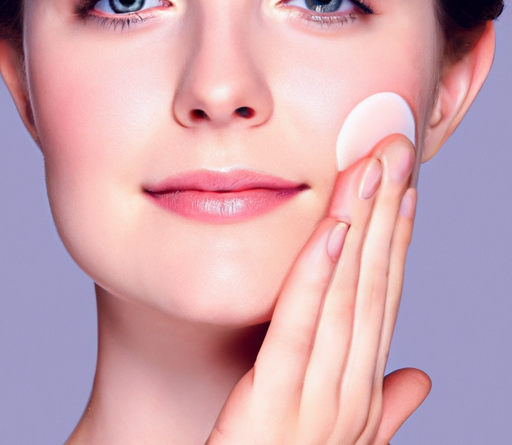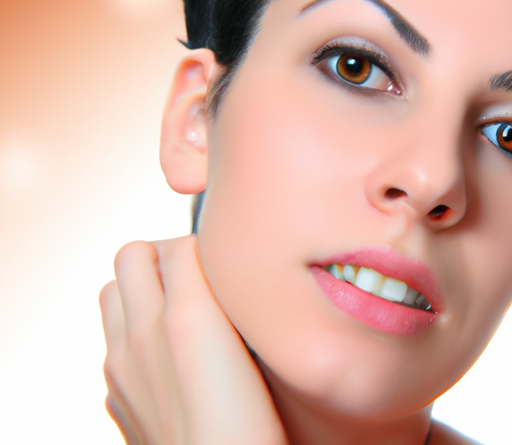If you’ve ever wondered how to achieve smoother, more even skin, look no further. Introducing “How To Fix Uneven Skin Texture?” This innovative product is designed to tackle the common issue of uneven skin texture, offering a simple and effective solution. Say goodbye to rough patches, bumps, and visible pores, as this remarkable product works to visibly improve your skin’s texture, leaving you with a radiant and flawless complexion. Don’t let uneven skin texture hold you back any longer – discover the secret to smoother skin today.

This image is property of images.unsplash.com.
Causes of Uneven Skin Texture
Genetic factors
Uneven skin texture can be influenced by genetic factors. Some individuals may be predisposed to having rough or bumpy skin due to their genetic makeup. This can be attributed to variations in collagen and elastin production, which are responsible for maintaining the skin’s texture and elasticity.
Age
As we age, our skin undergoes natural changes that can contribute to uneven texture. The production of collagen and elastin decreases, leading to thinner and less plump skin. Additionally, the rate of cell turnover slows down, resulting in a buildup of dead skin cells on the surface. This can give the skin a rough and dull appearance.
Sun damage
Excessive exposure to the sun’s harmful UV rays can have damaging effects on the skin, including uneven texture. UV rays penetrate the skin and can disrupt collagen production, leading to a loss of elasticity. This can cause the skin to become rough, bumpy, and uneven over time.
Hormonal changes
Fluctuations in hormonal levels, such as during puberty, pregnancy, or menopause, can contribute to changes in the skin’s texture. Hormonal imbalances can trigger an increase in sebum production, which can clog pores and lead to the formation of acne or rough skin.
Poor skincare routine
Not following a proper skincare routine can also contribute to uneven skin texture. Neglecting to cleanse, exfoliate, and moisturize regularly can lead to a buildup of dirt, oil, and dead skin cells, resulting in clogged pores and rough skin. Inadequate removal of makeup can also contribute to dullness and uneven texture.
Smoking and alcohol consumption
Smoking and excessive alcohol consumption can have detrimental effects on the skin’s texture. Smoking restricts blood flow to the skin, depriving it of oxygen and nutrients, which contributes to a dull and uneven complexion. Alcohol can dehydrate the skin, leading to dryness and roughness.
Unhealthy diet
A poor diet lacking in essential nutrients can impact the health and appearance of the skin. Consuming processed foods, sugary drinks, and high amounts of refined carbohydrates can lead to inflammation in the body, which can manifest as skin issues, including uneven texture. A diet lacking in fruits, vegetables, and healthy fats can also deprive the skin of necessary nutrients for optimal texture and appearance.
Identifying Uneven Skin Texture
Rough or bumpy skin
Uneven skin texture is often characterized by rough or bumpy skin. When you touch your skin, it may feel coarse or uneven, with areas that are not smooth to the touch. These rough patches can be particularly noticeable on the cheeks, forehead, or chin.
Enlarged pores
Uneven texture can also present itself as enlarged pores. Pores may appear larger than usual and can be more visible, especially on the nose, cheeks, and forehead. This can give the skin a pitted or uneven appearance.
Acne scars
Acne scars can contribute to uneven skin texture. When acne heals, it can leave behind scars or indentations in the skin, giving it an uneven look. These scars can vary in severity, ranging from shallow depressions to deeper pockmarks.
Hyperpigmentation
Uneven skin texture can be accompanied by areas of hyperpigmentation. These are patches of skin that appear darker or lighter than the surrounding skin tone. Hyperpigmentation can be caused by sun damage, acne scars, hormonal changes, or inflammation.
Fine lines and wrinkles
Fine lines and wrinkles can also contribute to uneven texture. As the skin ages, collagen and elastin production decrease, leading to the formation of lines and wrinkles. These can appear as shallow or deep creases in the skin, contributing to an uneven appearance.
Dry patches
Dry patches are another indicator of uneven skin texture. These areas may feel rough, tight, or flaky and can be more noticeable when applying makeup. Dry patches can occur due to a lack of moisture in the skin or a buildup of dead skin cells on the surface.
Consulting a Dermatologist
Importance of professional assessment
If you are concerned about your uneven skin texture, it is important to consult a dermatologist for a professional assessment. A dermatologist can examine your skin, identify any underlying conditions or causes contributing to the uneven texture, and provide appropriate treatment recommendations.
Diagnosis of underlying conditions
A dermatologist can diagnose any underlying conditions that may be contributing to your uneven skin texture. Conditions such as rosacea, eczema, or psoriasis can impact the texture and appearance of the skin. By identifying these conditions, the dermatologist can tailor a treatment plan to address both the underlying condition and the uneven texture.
Treatment recommendations
After assessing your skin, a dermatologist can recommend specific treatments to help improve uneven texture. These may include topical treatments, medical procedures, lifestyle changes, or a combination of approaches. Consulting a professional ensures that you receive personalized and effective recommendations for your specific skin concerns.
Establishing a Skincare Routine
Cleansing
A crucial step in maintaining a healthy and even skin texture is regular cleansing. Cleanse your face twice a day with a gentle cleanser to remove dirt, oil, and impurities. Avoid harsh cleansers that can strip the skin of its natural oils, as this can lead to dryness and further uneven texture.
Exfoliating
Exfoliation is essential to remove dead skin cells and promote cell turnover. Use a gentle exfoliant, such as a scrub or chemical exfoliant, 2-3 times a week to slough off the buildup of dead skin cells. Be mindful not to over-exfoliate, as this can irritate the skin and worsen uneven texture.
Toning
Using a toner after cleansing and exfoliating can help restore the skin’s pH balance and tighten pores. Look for toners with ingredients like witch hazel or rosewater, which can soothe and hydrate the skin while promoting a more even texture.
Moisturizing
Moisturizing is vital for maintaining hydrated and smooth skin. Choose a moisturizer that suits your skin type and contains ingredients like hyaluronic acid or ceramides to hydrate and plump the skin. Apply moisturizer twice a day, morning and night, to keep your skin nourished and supple.
Using sunscreen
Sun protection is crucial to prevent further damage to the skin’s texture. Apply a broad-spectrum sunscreen with SPF 30 or higher every day, even on cloudy days. This will protect your skin from harmful UV rays that can exacerbate uneven texture and lead to other skin issues.
Adopting a consistent routine
Consistency is key when it comes to establishing a skincare routine. Stick to your cleansing, exfoliating, toning, and moisturizing routine consistently to see the best results. Even if your skin improves, maintaining a regular skincare routine will help prevent the return of uneven texture.
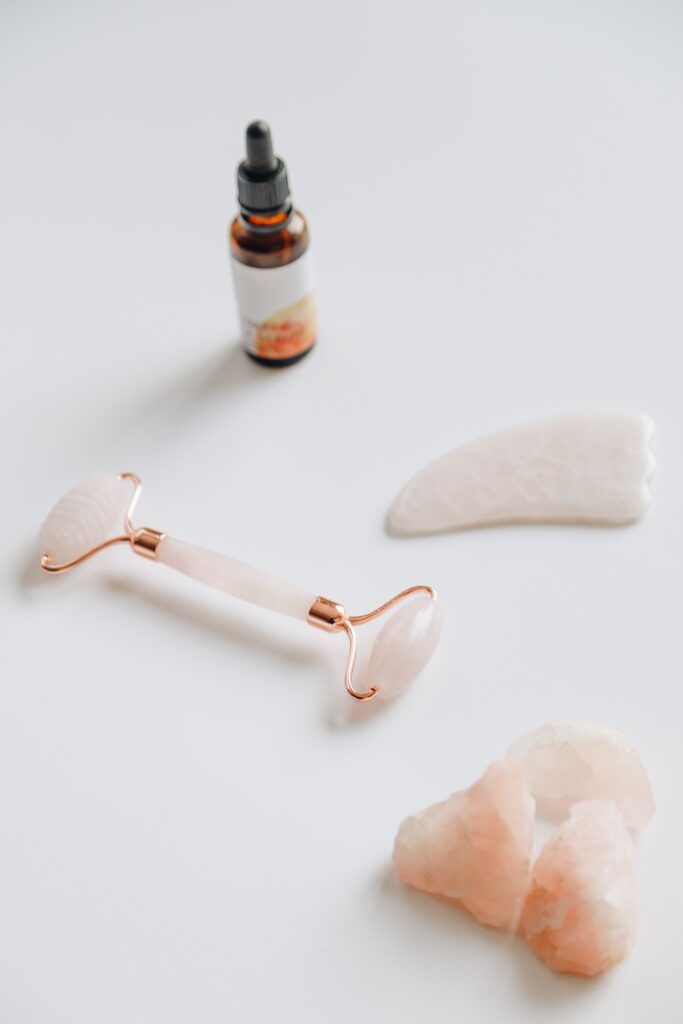
This image is property of images.unsplash.com.
Chemical Exfoliation
Benefits of chemical exfoliants
Chemical exfoliants, such as alpha-hydroxy acids (AHAs) or beta-hydroxy acids (BHAs), can be effective in improving uneven skin texture. Unlike physical exfoliants like scrubs, chemical exfoliants work by dissolving the bonds between dead skin cells, allowing them to be easily shed. This can result in smoother and more even skin.
Selection of suitable exfoliants
Choosing the right chemical exfoliant for your skin type is important to prevent irritation or adverse reactions. AHAs like glycolic acid are effective for surface exfoliation and can improve overall skin texture. BHAs like salicylic acid are oil-soluble and can penetrate the pores, making them beneficial for addressing uneven texture caused by clogged pores.
Glycolic acid
Glycolic acid is an AHA derived from sugar cane and is known for its exfoliating properties. It helps to remove dead skin cells, stimulate collagen production, and improve skin texture. Start with a lower concentration and gradually increase as tolerated to minimize the risk of irritation.
Salicylic acid
Salicylic acid is a BHA commonly derived from willow bark and is particularly effective for oily or acne-prone skin. It can penetrate the pores and exfoliate the skin from within, helping to improve uneven texture caused by clogged pores and acne. Start with a low percentage and increase gradually to avoid dryness or irritation.
Lactic acid
Lactic acid is another AHA that can be beneficial for improving uneven skin texture. It is gentler than glycolic acid, making it suitable for sensitive skin types. Lactic acid helps to exfoliate the surface of the skin, promote cell turnover, and improve the overall appearance and texture of the skin.
Medical Treatments
Microdermabrasion
Microdermabrasion is a non-invasive procedure that uses a handheld device to exfoliate the outermost layer of the skin. It helps to remove dead skin cells, improve uneven texture, and promote collagen production. Multiple sessions may be required for optimal results.
Chemical peels
Chemical peels involve the application of a chemical solution to the skin, which removes the outermost layer and promotes cell turnover. They can be tailored to target specific skin concerns, including uneven texture. Chemical peels can range from superficial to deep, depending on the desired results.
Laser resurfacing
Laser resurfacing treatments use laser technology to remove damaged skin cells and stimulate collagen production. This can help improve uneven texture by promoting smoother and more even skin. Different types of lasers may be used, depending on the severity of the texture concerns.
Dermabrasion
Dermabrasion is a more invasive procedure that involves the use of a rotating instrument to remove the outer layer of the skin. It helps to resurface the skin, improving uneven texture and promoting collagen production. Dermabrasion may require a longer recovery time compared to other treatments.
Microneedling
Microneedling involves the use of a device with small needles that create tiny punctures in the skin. This stimulates the skin’s natural healing response, promoting collagen production and smoothing out uneven texture. Multiple sessions may be required for optimal results.
Fractional laser therapy
Fractional laser therapy delivers laser energy in a fractionated manner, targeting specific areas of the skin. It helps to resurface the skin, improve texture, and stimulate collagen production. Fractional laser therapy can be effective for addressing more severe cases of uneven texture.
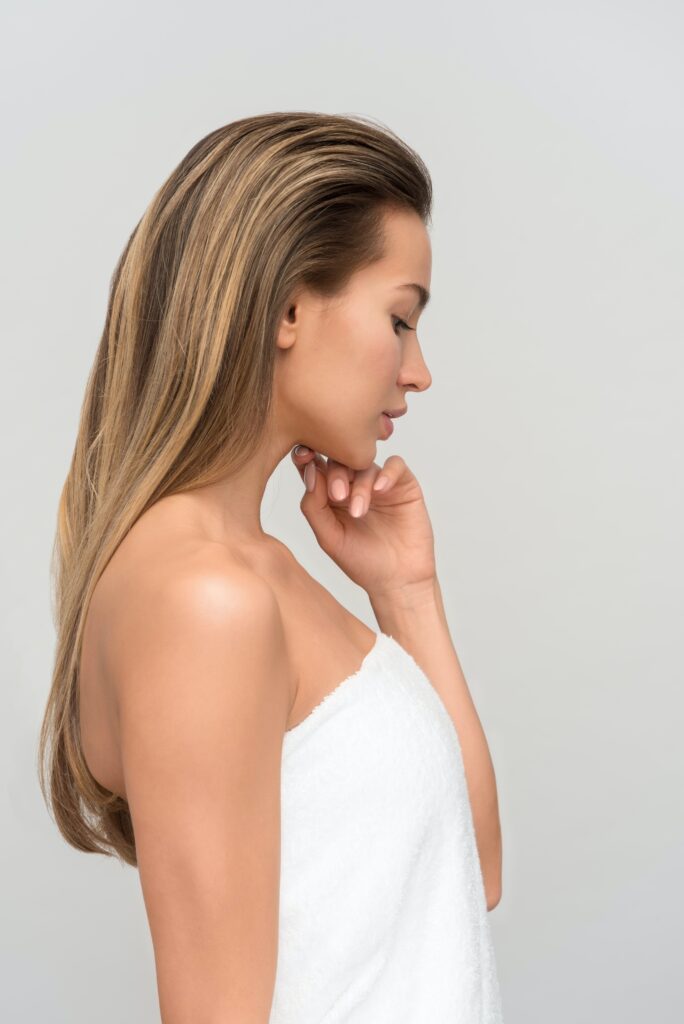
This image is property of images.unsplash.com.
Topical Treatments
Retinoids
Retinoids are vitamin A derivatives that can help improve uneven skin texture. They work by boosting cell turnover, promoting collagen production, and reducing the appearance of fine lines and wrinkles. Retinoids should be used under the guidance of a dermatologist and introduced gradually to minimize irritation.
Vitamin C serums
Vitamin C serums contain antioxidants that can help brighten the complexion, improve uneven texture, and stimulate collagen production. They can also protect the skin from free radical damage caused by sun exposure. Look for serums with stable forms of vitamin C, such as ascorbic acid or magnesium ascorbyl phosphate.
Hydroquinone
Hydroquinone is a skin-lightening agent that can be used to address hyperpigmentation and uneven skin tone. It works by inhibiting the production of melanin, the pigment responsible for dark spots. Hydroquinone should be used under the guidance of a dermatologist and for a limited duration to minimize potential side effects.
Kojic acid
Kojic acid is another skin-lightening ingredient that helps to reduce hyperpigmentation and even out skin tone. It works by inhibiting the enzyme responsible for melanin production. Kojic acid can be found in various skincare products, including serums, creams, and masks.
Niacinamide
Niacinamide, also known as vitamin B3, has multiple benefits for the skin, including improving uneven texture. It helps to regulate sebum production, reduce redness, and strengthen the skin’s barrier. Niacinamide can be found in serums, moisturizers, and toners.
Alpha-hydroxy acids
Alpha-hydroxy acids, such as glycolic acid and lactic acid, can also be used as topical treatments to improve uneven skin texture. They work by exfoliating the surface of the skin, promoting cell turnover, and revealing smoother, more even skin. They can be found in various skincare products, including cleansers, toners, and serums.
Home Remedies
Exfoliating masks
Exfoliating masks can help remove dead skin cells and improve uneven texture. Look for masks containing ingredients like clay, fruit enzymes, or AHAs/BHAs. Apply the mask to clean skin, leave it on for the recommended time, and rinse off with warm water. Use exfoliating masks according to the instructions provided and avoid excessive use to prevent irritation.
DIY scrubs
DIY scrubs can be made using ingredients found in your pantry. Common ingredients for DIY scrubs include sugar, coffee grounds, oatmeal, or baking soda. Mix the ingredient of your choice with a carrier oil, such as olive oil or honey, and gently massage onto damp skin in circular motions. Rinse off with warm water and follow up with a moisturizer.
Natural skin toners
Natural skin toners can be made using ingredients like witch hazel, rosewater, or apple cider vinegar. These toners can help remove excess oil, tighten pores, and improve overall skin texture. Apply the toner to a cotton pad and gently swipe it across cleansed skin. Follow up with a moisturizer.
Homemade moisturizers
Homemade moisturizers can provide nourishment and hydration to the skin. Ingredients like shea butter, coconut oil, or aloe vera gel can be used to create a moisturizer suitable for your skin type. Apply a small amount to clean skin and gently massage until absorbed.
Face oils
Face oils can help moisturize and improve the texture of the skin. Look for oils such as jojoba oil, rosehip oil, or argan oil, which are known for their hydrating and nourishing properties. Apply a few drops of oil to clean skin and gently massage until absorbed. Use as a final step in your skincare routine.
Aloe vera gel
Aloe vera gel is a natural ingredient known for its soothing and healing properties. It can help improve uneven texture, reduce inflammation, and hydrate the skin. Apply a thin layer of aloe vera gel to clean skin and allow it to absorb before applying other skincare products.
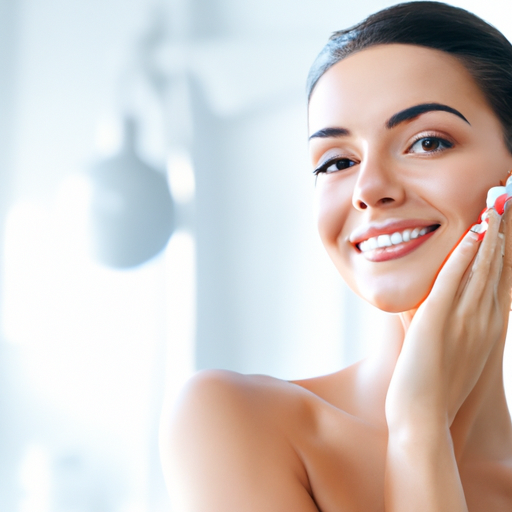
Lifestyle Changes
Healthy diet
Maintaining a healthy diet is essential for overall skin health, including texture. Focus on consuming a balanced diet rich in fruits, vegetables, whole grains, and lean proteins. These provide essential nutrients that can support healthy skin and improve texture.
Adequate hydration
Drinking enough water is crucial for maintaining hydrated and plump skin. Aim to drink at least 8 glasses of water per day to keep your skin properly hydrated. Hydrated skin is less prone to dryness, which can contribute to uneven texture.
Reducing stress levels
Chronic stress can impact the health and appearance of the skin. High stress levels can disrupt the skin’s barrier function, leading to dryness, increased sebum production, and inflammation. Managing stress through activities like exercise, meditation, or hobbies can help improve overall skin health, including texture.
Quitting smoking
Smoking has numerous negative effects on the skin, including uneven texture. It restricts blood flow to the skin, depriving it of essential nutrients and oxygen. Quitting smoking can help improve blood circulation and promote healthier skin.
Limiting alcohol consumption
Excessive alcohol consumption can dehydrate the skin, leading to dryness and roughness. Limiting alcohol intake and drinking in moderation can help maintain hydrated and more even-textured skin.
Quality sleep
Getting enough quality sleep is crucial for skin health and texture. During sleep, the body repairs and rejuvenates the skin cells. Aim for 7-8 hours of uninterrupted sleep to promote optimal skin health.
Preventing Uneven Skin Texture
Sun protection
Protecting your skin from the sun is vital to prevent further damage and maintain a smooth and even texture. Wear sunscreen with at least SPF 30 every day, even on cloudy days, and reapply every 2 hours when exposed to direct sunlight. Wear protective clothing, seek shade, and avoid peak sun hours when the sun’s rays are most intense.
Regular skin assessments
Perform regular self-examinations of your skin to identify any changes or areas of concern. Look for any new growths, changes in moles, or areas of uneven texture. If you notice any concerning changes, consult a dermatologist for further evaluation.
Consistent skincare routine
Maintaining a consistent skincare routine is essential for preventing uneven skin texture. Stick to a regular cleansing, exfoliating, toning, and moisturizing routine to keep your skin healthy and balanced. Additionally, use sunscreen every day to protect your skin from sun damage.
Avoiding harmful habits
Avoiding habits that can damage the skin, such as smoking and excessive alcohol consumption, can contribute to maintaining smooth and even-textured skin. These habits can dehydrate the skin and impair its natural healing processes.
Maintaining overall health
Taking care of your overall health can have a positive impact on your skin’s texture. Eat a balanced diet, stay hydrated, manage stress levels, and prioritize quality sleep. These healthy lifestyle choices can promote optimal skin health and contribute to a smooth and even complexion.
By understanding the causes of uneven skin texture and following proper skincare practices, you can work towards improving and maintaining a smoother and more even complexion. From consulting a dermatologist to identifying suitable treatments, establishing a consistent skincare routine, and making positive lifestyle changes, you have the power to take control of your skin’s texture and achieve healthy and radiant results.
